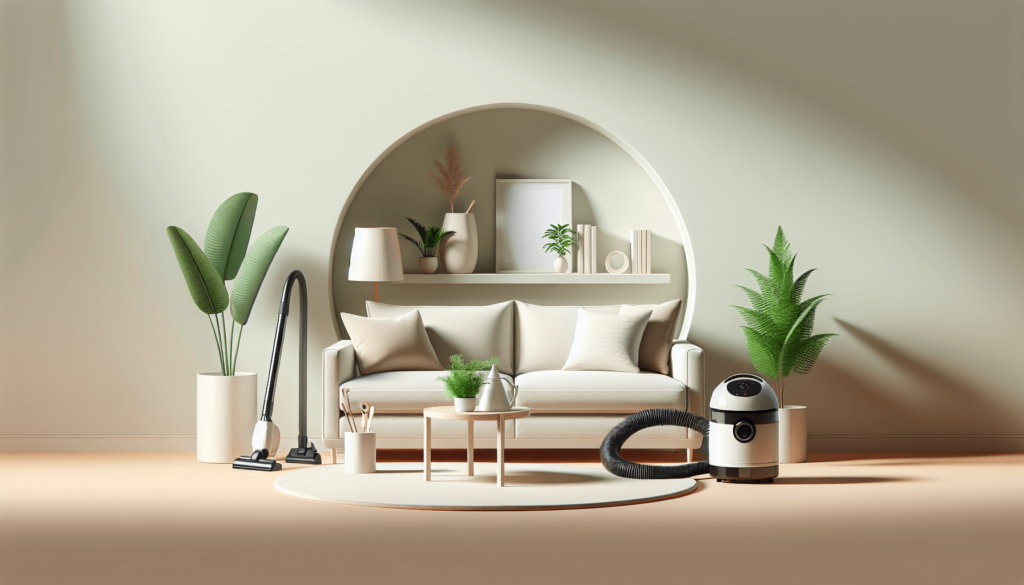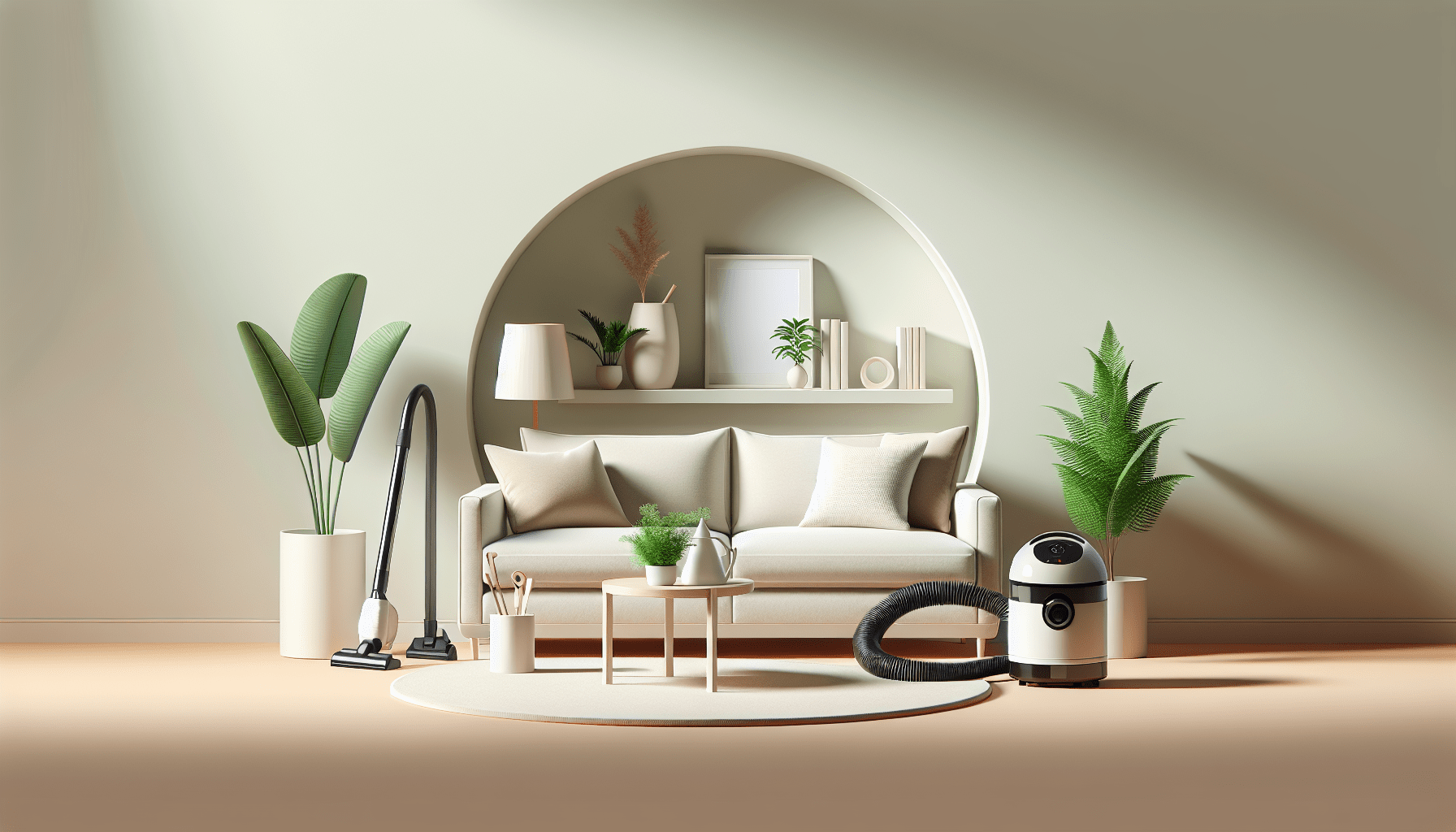Have you ever felt like your home is an overwhelming mess and you’re constantly sneezing or dealing with allergies? Managing clutter and allergens can often feel like a never-ending battle, but there’s good news: solutions are out there. This comprehensive guide will discuss the top 10 effective methods to declutter and minimize allergens in your living space. By following these practices, you can create a healthier, more organized, and breathable environment.
1. Start with a Plan
The first step in any successful decluttering attempt is to start with a solid plan. This plan will keep you focused and motivated, ensuring that you achieve your goals without feeling overwhelmed.
Prioritize Rooms
Identify which rooms need the most attention, and tackle them one at a time. Typically, bedrooms and living rooms should be prioritized, as these are spaces where you spend most of your time.
Set Specific Goals
Define what you want to achieve in each room. Are you aiming to reduce dust or eliminate unnecessary items? A clear goal will guide your efforts and make the process more manageable.
Schedule Time
Block out specific times in your calendar dedicated to decluttering. Consistency is key — even spending 15 minutes per day can yield significant results over time.
2. Use the Three-Box Method
The Three-Box Method is a straightforward system for decluttering. It involves sorting items into three categories: Keep, Donate, and Throw Away.
How to Implement the Three-Box Method
| Category | Description |
|---|---|
| Keep | Items you use regularly or have significant sentimental value |
| Donate | Items in good condition that you no longer need or use |
| Throw Away | Items that are broken, expired, or not worth donating |
Go through each room, sorting items into these three categories. By doing this, you can systematically reduce clutter without feeling overwhelmed.

3. Declutter Regularly
Decluttering isn’t a one-time activity but an ongoing process. Regular maintenance is essential to keep your living space organized and allergen-free.
Establish Routine Checks
Include decluttering in your weekly or monthly chores. This habit ensures that things don’t pile up again, and by doing so, reduces the build-up of dust and allergens.
Seasonal Clean-Out
Consider doing a more comprehensive declutter with the seasons. For instance, you can declutter your wardrobe, getting rid of clothes you didn’t wear last season, which also reduces dust accumulation.
4. Use Hypoallergenic Materials
Choosing hypoallergenic materials for your home can significantly reduce allergens like dust mites, mold, and bacteria.
Hypoallergenic Bedding
Opt for removable and easily washable hypoallergenic pillows, mattress covers, and duvet covers. These materials are designed to ward off dust mites and other allergens.
Flooring Options
If possible, select hard flooring such as wood or tiles rather than carpets, which can trap allergens. For those who need carpeted floors, opt for low-pile carpets and vacuum them regularly.

5. Invest in Quality Vacuum Cleaners
A good vacuum cleaner can make all the difference when it comes to minimizing allergens in your home.
Features to Look For
| Feature | Benefit |
|---|---|
| HEPA Filter | Captures 99.97% of pollen, dust mites, and other small particles |
| Strong Suction | Ensures deep cleaning of carpets and other surfaces |
| Bagged Models | Contain and trap dust more effectively than bagless models, reducing airborne particles |
Vacuuming Frequency
Make it a habit to vacuum high-traffic areas at least twice a week. Less frequently used rooms can be vacuumed once a week.
6. Control Humidity Levels
Maintaining optimal humidity levels can help reduce mold and dust mites, which thrive in humid conditions.
Use a Dehumidifier
A dehumidifier can effectively reduce moisture levels in your home. Aim for a humidity level between 30-50%.
Proper Ventilation
Ensure good airflow in your home by using exhaust fans in bathrooms and kitchens. Open windows when weather permits to circulate fresh air.
7. Wash Fabrics Frequently
Fabrics can be a breeding ground for dust mites and other allergens. Regular washing can help mitigate this issue.
Bedding and Curtains
Wash your sheets, pillowcases, and curtains in hot water (130°F/54°C or higher) at least once a week. This temperature effectively kills dust mites.
Upholstered Furniture
For non-removable upholstery, use a vacuum cleaner with a HEPA filter to remove allergens. Removable covers should be washed regularly.
8. Reduce Mementos and Trinkets
While keepsakes and personal items add character to your home, they can also collect dust and contribute to clutter.
Sort and Display
Limit the number of items displayed on open surfaces. Instead, rotate a few treasured items and store the rest. This decision reduces dusting and keeps your home looking tidy.
Memory Boxes
Consider keeping sentimental items in memory boxes. These can be neatly stored and accessed when needed, reducing dust-collecting clutter.
9. Use Air Purifiers
Air purifiers can significantly improve the air quality in your home by capturing airborne allergens.
HEPA Filters
Choose air purifiers with HEPA filters, as they are effective in capturing 99.97% of airborne particles. Position them in the rooms where you spend the most time, such as your bedroom or living room.
Regular Maintenance
Replace the filters as recommended by the manufacturer to maintain the purifier’s effectiveness.
10. Adopt Smart Storage Solutions
Effective storage solutions can aid in reducing clutter and minimizing allergens.
Closed Storage
Opt for closed storage options like cabinets and boxes with lids. These keep your items dust-free and organized.
Vertical Space
Maximize your vertical space by using shelves and tall storage units. This approach not only saves floor space but also reduces clutter.
Labeling
Labeling your storage containers helps you easily find what you need without rummaging through items, thus preventing the spread of dust.
Storage Solutions
| Storage Type | Description |
|---|---|
| Closed Boxes | Prevent dust accumulation, ideal for trinkets and mementos |
| Shelves | Optimize vertical space, keep items organized and off the floor |
| Under-Bed Storage | Utilize space under the bed for lesser-used items, reducing clutter in main areas |
Taking the First Step
Now that you are equipped with these top 10 effective methods to declutter and minimize allergens, the next step is to implement them one by one. Start with small, manageable tasks to build momentum and gradually tackle larger projects. Remember, the key to maintaining a clean and allergen-free home is consistency and perseverance. Stay committed, and you’ll soon notice a significant difference in both your living space and allergic symptoms.
Creating a healthy and organized home environment doesn’t have to be overwhelming. By following these practices and making them a part of your routine, you’ll reap the benefits of a cleaner, more breathable space. Your health and well-being are worth the effort!
